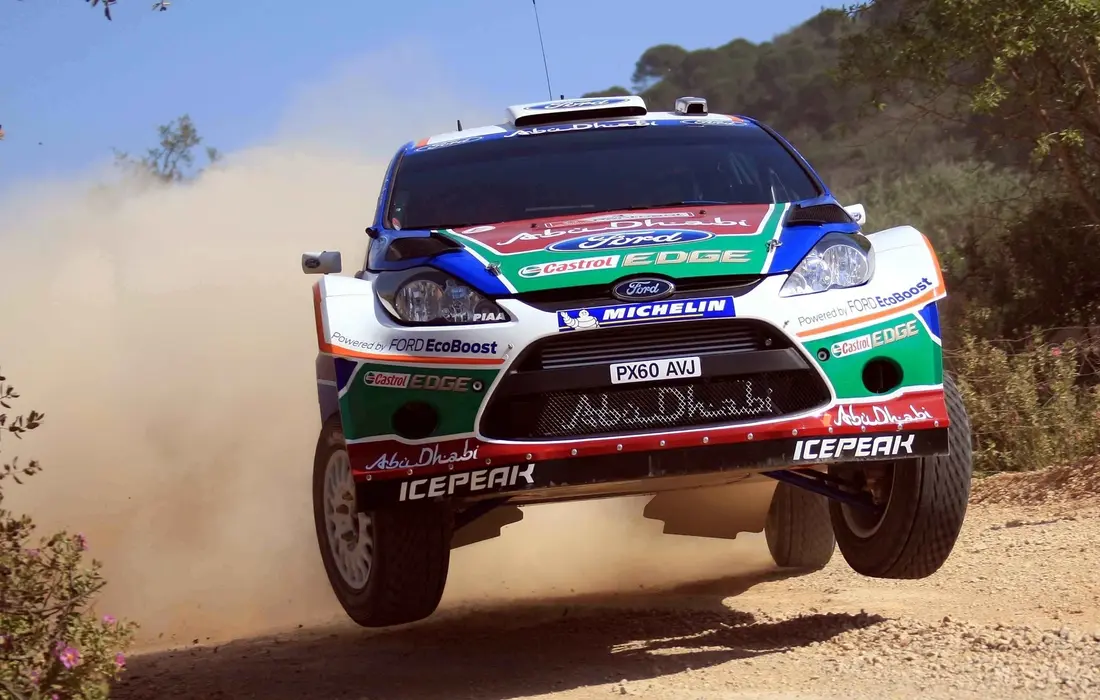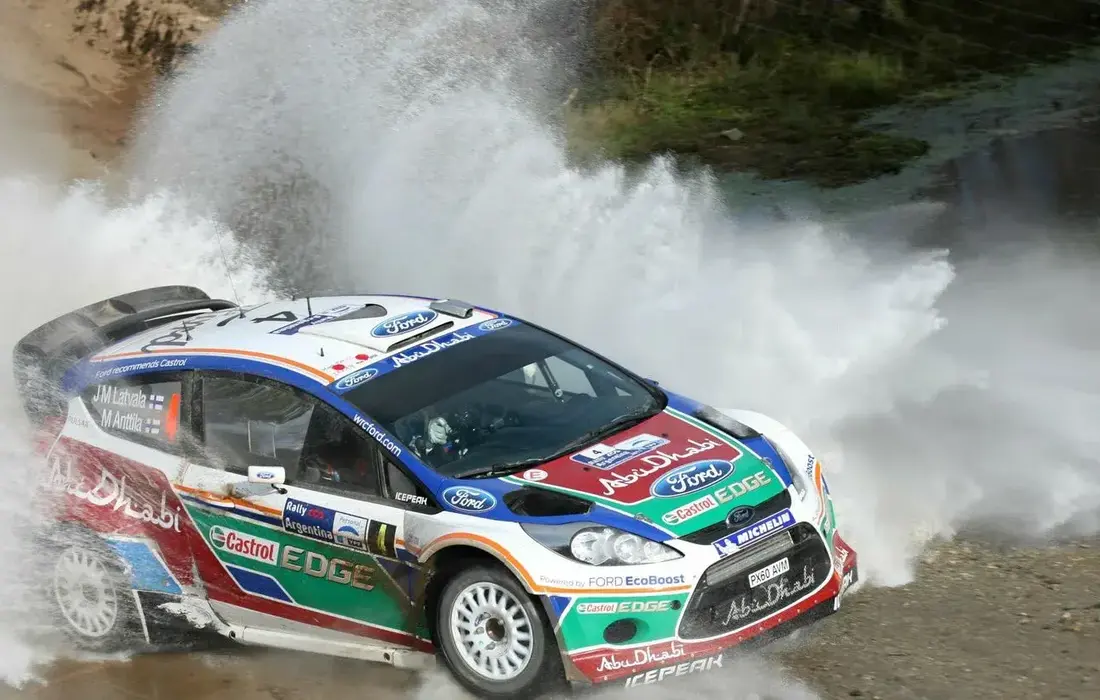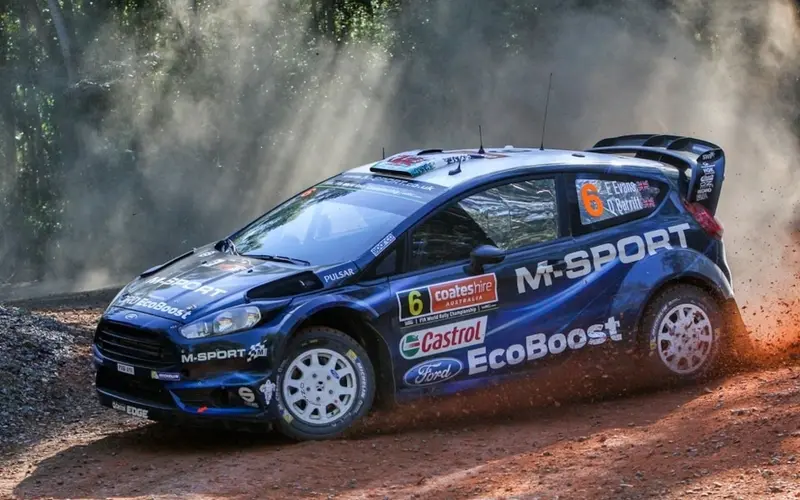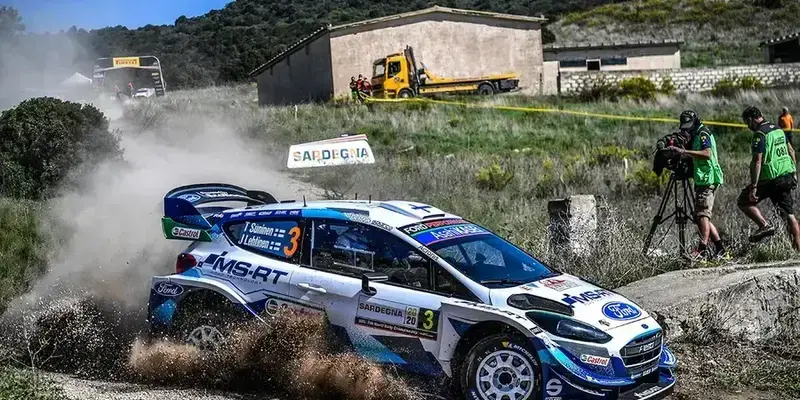If you’re someone who’s into fast cars, dirt roads, and adrenaline-pumping action, you’ve probably wondered, “What’s the deal with rally sports?” You’ve heard about them, and maybe seen some epic highlights, but don’t know where to start. Well, rally sports are a whole world of speed, skill, and adventure that’s a bit different from your typical race day. It’s a motorsport that blends precision driving with unpredictable terrain, and it’s becoming a go-to for thrill-seekers.
In this article, we’ll break down everything you need to know about rally sports. Whether you’re curious about the sport itself, looking for local events near you, or thinking of taking your own car off-road, we’ve got you covered. Let’s dive into the basics and then hit the road with some expert tips, fun facts, and challenges of rally sports.
What Are Rally Sports?
At its core, rally sports is a form of motorsport that takes place on public or private roads, often in extreme conditions. Unlike track racing, where cars loop around a paved circuit, rally drivers face gravel, mud, snow, and other rough terrains. It’s not just about speed; it’s about navigating tough obstacles with precision and skill.
Rally sports cars are built for both performance and durability. These machines need to withstand some serious punishment while delivering peak performance, whether it’s on a dirt track or a winding mountain road.
One of the coolest things about rally sports is that it’s often broken down into timed stages. Instead of racing side by side, drivers take on a section of road and aim for the best time. It’s all about precision, not just raw speed.
Why Rally Sports Stand Out
You’ve probably seen regular racing, but what makes rally sport different?
- Variety of Terrain: One day you’re racing through forests; the next, you’re skidding on snow. Every rally event feels like a new adventure.
- Driver and Co-Driver Duo: The driver is in control of the car, but the co-driver is the unsung hero reading off notes, navigating turns, and keeping the driver on the right path.
- Precision Over Speed: It’s not just about flooring the gas. Drivers need to handle tight turns, unexpected obstacles, and rapidly changing road conditions.
The Thrill of the Rally Sports Challenge

Whether you’re watching from the sidelines or taking the wheel, there’s a challenge in every race. With a rally sports challenge, you never know what the road ahead looks like. In fact, rally drivers often go into the event without knowing the full course details ahead of time. The co-driver reads notes on the go, giving out instructions like “Left 3 over crest” or “Flat right into hairpin.” Without the co-driver, the driver would be lost—literally.
Relevant Keywords in the Scene
If you’re looking to learn more about rally sports, you’ll come across terms like:
- Rally Sports Direct: A popular place to get gear, parts, and tips.
- Rally Sports Store: Where fans and drivers alike can get everything from rally jackets to custom parts for their cars.
- Rally Sports Challenge: The competitive side of rally racing, where drivers pit their skills against others in timed events.
These are just a few key places to start, but rally sports have communities all over the world.
Getting Started with Rally Sports
Now, if you’re itching to get involved in rally sports—either as a spectator or driver—here’s what you need to know.
- Find Local Rally Sports Events: Search for “rally sports near me” or specific venues like the Rhythm & Rally Sports & Events. They regularly host events that bring out the best drivers.
- Gear Up: Hit up a rally sports store to grab essential gear—whether it’s a helmet, fireproof clothing, or even a suspension upgrade for your car.
- Join a Community: Many regions have local clubs like Northwest Rally Sports or Southeast Rally Sports that can help you get your foot in the door. You can also join forums or online communities where drivers and enthusiasts share tips.
What Does It Take to Compete?
Competing in rally sports is no joke. You’ll need more than just a fast car. Here’s what you’ll need:
- Training: Driving on loose gravel or snow is very different from driving on asphalt. Consider getting professional rally training to learn how to control your car.
- Rally Car: While you don’t need a dedicated rally sports car right off the bat, you’ll want a vehicle with solid handling, a good suspension system, and enough power to handle off-road terrains.
- Safety Gear: Racing helmets, harnesses, and fireproof suits are just a few items that are a must. Safety always comes first in rally sport.
- A Good Co-Driver: This isn’t a solo sport. You’ll need someone you can trust, who knows how to read pace notes and keep you on track.
Rally Sports Cars: The Backbone of the Sport
Rally sports wouldn’t exist without specialized cars designed to take a beating while maintaining performance. From the iconic Subaru WRX to the Ford Fiesta ST, rally sport cars are built for power, control, and durability. You might also hear about rally sport classics—older models that are still revered by enthusiasts today.
Each car is modified for different types of terrain. Whether it’s rugged gravel or slick snow, rally cars are equipped with suspension systems, reinforced chassis, and roll cages to protect the driver in case of an accident.
The Community Around Rally Sports
Rally sports isn’t just about competition; it’s about community. Whether you’re hitting up a rally sports bar to watch a race or attending a live event, the camaraderie in the sport is huge. Rally fans are passionate, and there’s nothing like sharing a cold one after a day of watching fast cars kick up dirt.
If you’re in places like Chippewa Falls, you’ll find hotspots like Rally Sports Bar Chippewa Falls, a gathering spot for locals to catch the latest rally action.
Exploring the Events: Rally Sports Near You

One of the best ways to immerse yourself in rally sport is by attending events in your area. Not only do these gatherings offer an exhilarating experience, but they also allow you to meet fellow enthusiasts and learn from seasoned drivers.
Finding Local Events
- Search for “Rally Sports Near Me”: Use this phrase in your search engine to discover local events. Websites like Rally America or the American Rally Association often have listings for races across the country.
- Social Media and Forums: Platforms like Facebook and Reddit can be treasure troves for finding upcoming events and connecting with other rally fans.
- Local Car Clubs: Many regions have car clubs that specialize in rally sport. These clubs often host events, training sessions, and meet-ups, making it easier for newcomers to get involved.
Types of Events
- Local Rallies: These are often organized by local clubs and can vary in size and difficulty. It’s a great starting point for beginners.
- National Championships: These larger events attract top talent from across the country. They are more competitive and usually feature challenging courses.
- Rallycross: A fun, spectator-friendly version of rally sports, where cars race on mixed surfaces—perfect for those looking to see some action up close.
Training for Rally Sports
If you’re serious about diving into rally sports, getting the right training is crucial. Here are some steps to help you prepare:
Take a Rally Driving Course
- Professional Instruction: Look for schools that offer rally driving courses. You’ll learn the basics of handling a rally car, navigating off-road terrain, and reading pace notes.
- Practice Makes Perfect: Many of these schools offer practice sessions in controlled environments, so you can build your skills without the pressure of competition.
Learn from the Best
- Mentorship: Find a mentor in the rally community. This could be an experienced driver or co-driver who can share insights and advice from their own experiences.
- Workshops and Seminars: Attend workshops that cover everything from car setup to strategy. Understanding the technical aspects can significantly enhance your performance.
Equipment Essentials
Once you’re hooked on rally sport, you’ll want to gear up properly. Here’s what you should consider:
- Car Setup: If you’re planning to race, investing in a good rally car is essential. Look for vehicles like the Subaru WRX or Ford Fiesta ST that are popular in the rally scene. Custom setups are often required, including:
- Upgraded suspensions
- Roll cages for safety
- High-performance tires for varied terrains
- Safety Gear: Your safety should always come first. Key items include:
- Helmets: Make sure you have a helmet that meets rally sport regulations.
- Racing Suits: These suits are fire-resistant and can save your life in a worst-case scenario.
- Harnesses: A proper harness is crucial to keep you secure in your seat during those tight turns and high-speed runs.
- Tools and Spare Parts: Carrying spare parts and tools in your vehicle can be a lifesaver in case of a breakdown. Familiarize yourself with basic repairs, so you’re prepared for anything that comes your way.
Join the Community
Connecting with others in the rally sport community can enhance your experience. Here are some ways to get involved:
- Attend Meetups: Look for local gatherings or meetups at places like the Rhythm & Rally Sports & Events Center. These are great for networking and learning from others.
- Engage Online: Join forums or social media groups dedicated to rally sport. These platforms are ideal for sharing experiences, asking questions, and finding teammates.
- Volunteer: Many rallies need volunteers to help run events. This is a fantastic way to get up close to the action and learn from behind the scenes.
A Day in the Life of a Rally Driver

To give you a clearer picture of what being a rally driver is like, let’s walk through a typical day during a rally event.
Early Morning: Preparation
- Wake-Up Call: Most drivers rise early to prepare for the day’s stages.
- Review the Course: They will review the pace notes and the stages they’ll face, making adjustments as needed.
Mid-Morning: Practice Runs
- Reconnaissance: Before the official runs, drivers often have a chance to do reconnaissance. This is when they drive the course slowly to gather vital information about the terrain.
- Adjusting Notes: Co-drivers will note any changes or challenges they see to adapt their strategy.
Afternoon: The Race Begins
- Start Line Excitement: The atmosphere at the start line is electric. Drivers and teams are buzzing with anticipation.
- Racing: During the race, drivers focus on executing their pace notes while keeping an eye on the competition. It’s a dance of precision and speed.
Evening: Debrief and Relaxation
- Post-Race Analysis: After racing, teams often hold debriefs to discuss what went well and what could be improved.
- Celebration or Reflection: Depending on the results, drivers might celebrate with their team or reflect on the challenges they faced.
FAQs About Rally Sports
What are rally sports?
Rally sports is a motorsport where drivers navigate through various terrains in a timed format, often on public or private roads.
Where can I find a rally sports event?
Look for events at venues like the Rhythm & Rally Sports & Events Center or search for “rally sports near me” to find local races and challenges.
What’s a rally sports car?
A rally sports car is a specially modified vehicle built to handle off-road terrains and intense conditions like snow, gravel, and mud.
How do I get started in rally sports?
Start by finding local events or clubs, and consider investing in training and safety gear. You don’t need a rally car to begin; many start with regular cars before upgrading.
What’s the difference between rally sports and other racing?
Unlike traditional circuit racing, rally sport take place on diverse terrains, and the focus is on precision and control, not just speed.
Final Thoughts
Rally sport isn’t just a race; it’s a test of skill, strategy, and teamwork. Whether you’re behind the wheel or watching from the sidelines, the excitement never stops. If you’re looking for a new motorsport to dive into, rally sports offers the perfect mix of adrenaline and challenge.
Ready to jump in? Start by checking out your local rally sport store, signing up for a beginner’s course, or heading to a live event. With a little bit of prep and the right gear, you could be tearing up the dirt in no time.

